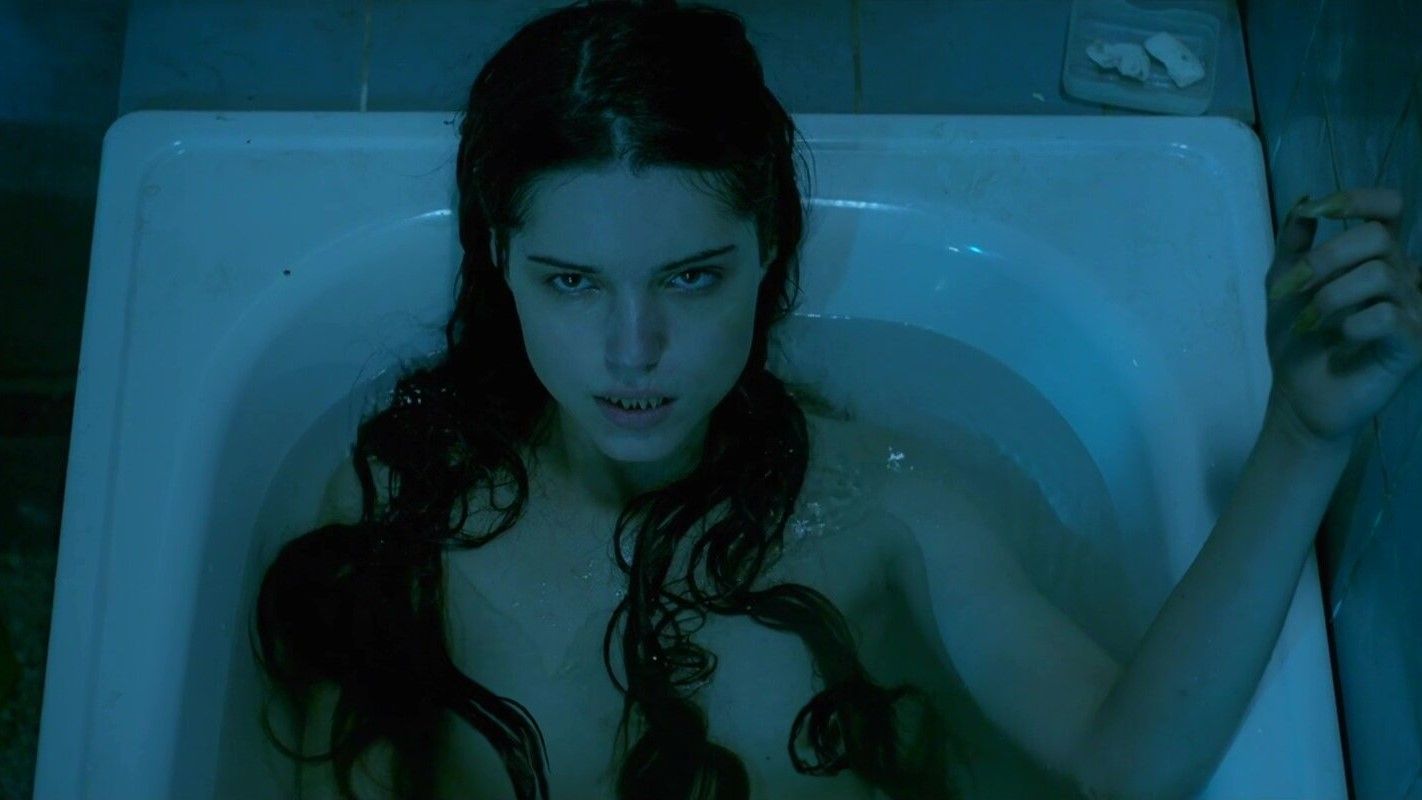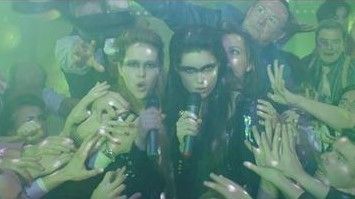2015 Polish horror movie The Lure is not your average horror movie; it is also a musical. Set in ‘80s Poland, creator Agnieszka Smoczynska tells the story of young mermaid sisters, Golden and Silver, played by Polish actresses Michalina Olszańska and Marta Mazurek, who are living on land and eat people. Through song and musical numbers, Smoczynska brings out the horrors of this film. Different genres from synth-pop to punk are used to accentuate moods and create intensity in the movie. Overall, the musical numbers add a layer of illusion that can disorient the viewer and blur the lines between what is deemed normal in the film but is actually horrific.
At first, the musical numbers in the film could make viewers think that the horror would be camp in ways, downplaying dreadful moments by what could be considered a silly musical number. One could expect fun songs about being a mermaid or ocean life if they did not know what the film was about. Especially because Smoczynska was inspired by Hans Christen Andersen’s The Little Mermaid. Mermaids are expected to be girly, flirty, and to sing passionate uplifting songs. From the introduction to the two girls, viewers can sense they have an edge to them that may characterize them more as the mythical “evil” siren as opposed to the mermaid.
Any feelings of potential fun left come to a definite halt when the mermaids come onshore to explore life on land and end up at an adult nightclub. The songs, as in most musicals, occupy the place that defining conversations would in non-musicals, to move the plot forward. Having this be a musical makes sense for the characters because historically, sirens communicated and lured people, specifically men, through their songs. Having these two young girls end up being a singing duo at an adult nightclub, takes the “siren song” aspect of the characters' story lines to another level. A level where horror can be induced in realistic ways that transcend the characters. Though the songs they sing usually bring the viewer back to the facet of the story that they are creatures, not women. The songs and their lyrics bring out this point a lot which is a central part to the story because the two sirens are exploring their femininity and sexuality. But ultimately their exploration is controlled by both the men in power around them, and their desire to eat humans. Both aspects are more horrifying than an ocean monster thinking it can pass as a human woman.
As the film plays out, the musical numbers heighten the horror of the film in the rest of the scenes as the movie unfolded. The film mostly takes place in a nightclub, a setting that naturally is full of music. The musical numbers in the film fit seamlessly into this setting and are able to emphasize the tone and vibe this club has going for it. The songs elevate the creepy, grimy tones of the club and the characters running it and working there, and even the guests in attendance. The mermaids are forced to perform, starting off as backup singers and then going on to having their own performance as a duo. Having the two girls perform is one of the strongest modes in which the music brings out the horror. Since the girls are their own singing act, it is part of the reality of the characters’ storylines, but it is also a huge facet that blurs the lines between what should be accepted and what is horrific. While it blurs lines, it is also in-your-face horrific as one can see how out of place and disturbing it is to have these two teen girls as the nightclub’s entertainment.
One of the inspired ideas that was most prominent was the storyline of the mermaid losing her voice in exchange for human legs. In this film that procedure is much more graphic and gruesome than in The Little Mermaid. There is a scene where Silver is laying on an ice bath getting her tail removed. She is singing about the woman she is about to become. It is a moment where the song she is singing is in contrast with the gore of the scene. This is something the character wanted for herself but hearing a song sung by a girl who the viewers are seeing get her waist cut into by a male doctor, with blood spurting all over the place, is quite horrific. The songs bring out horror not only for the viewer, but for the characters themselves, in turn creating more horror for the audience. When Silver falls in love with a human, a merman warns Golden that if the man does not end up marrying Silver, that she will dissipate into seafoam. Unless Silver eats the man before he can marry another. Golden sings about the fear of her losing her sister, and the audience can feel her anxiety and foreboding growing. The main characters utilizing the songs to bring their own terrors to life is a great contributor of unease in viewers on top of the obscenity that is having underage girls be under the control of old men at a nightclub.
The musical component of this horror film is successful because it allows viewers to be presented with a character that was expected to be familiar, such as the gentle mermaid, but ends up paying homage to the original mythical “evil” sirens who have much more frightening agendas such as eating humans and ripping their throats out. The songs also act as a bridge to present more forceful and terrifying aspects that come with being a young woman in world where men are in charge; especially being a woman with some unique traits (in this case, a slimy fishtail).



